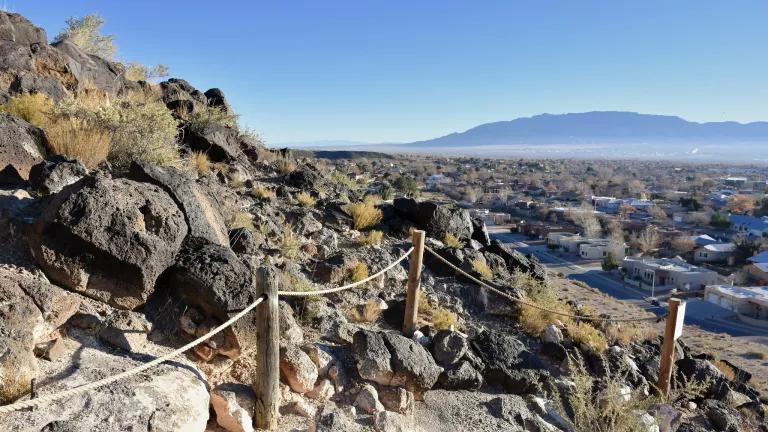
Boosting efficient use of energy. That’s been policy in my state since 2008, when EmPOWER Maryland was enacted. This year that policy was renewed by the General Assembly and Governor, moving us into a future with more energy savings thanks to technologies and techniques such as better building insulation, more efficient lighting and improved heating and cooling systems.
The original law required that Maryland’s 5 investor-owned utilities including BGE and Pepco assemble plans for saving electricity, reviewed and approved by our Public Service Commission (PSC). Two years after enactment the PSC gave the Department of Housing and Community Development (DHCD) the responsibility of delivering energy efficiency improvements to low-income Marylanders due to the agency’s expertise in implementing the federal Weatherization Assistance Program (WAP).
The original mandate was a 15 percent reduction in electricity sales by 2015. Then in 2015, as I wrote about here, the PSC built on that successful foundation by requiring a ramp up to a regular electricity savings clip of two percent per year. Utilities and DHCD developed and executed new plans accordingly.
In 2017 the legislature stepped in, specifically State Senator Thomas “Mac” Middleton and Delegate Sally Jameson. These energy-efficiency champions offered bills that make the current two-percent-savings-per-year rate state law. These bills moved swiftly through committees they chair – committees whose jurisdiction includes the PSC – after hearings which included an NRDC witness. My colleague Lauren Urbanek framed the national importance and collaborative implementation of this state policy:
Since the programs began in 2009, EmPower Maryland has grown from a modest energy efficiency program to become an award-winning, nationwide model for how to make an impact with energy efficiency. Thanks to the efforts of Maryland’s utilities, the leadership of the Public Service Commission (PSC) and their staff, MEA [the Maryland Energy Administration], DHCD, Office of People’s Counsel (OPC), the strong network of contractors and small businesses, and too many others to name here today, Maryland has consistently been named among the top ten states for energy efficiency for the last six years.
Brendon Baatz of the American Council for an Energy Efficient Economy (ACEEE) – which produces the ranking cited by Lauren – also testified about the bills, walking through analysis of the policy’s performance his team completed this year (with NRDC support). They concluded that utility and DHCD programs driven by the policy are exceedingly worthwhile, delivering $1.81 in benefits for every dollar invested. The study results were announced at an event outside M & T Stadium (where the Baltimore Ravens play) which was covered on television in Baltimore.
The programs that DHCD implements under the EmPOWER Maryland umbrella include the Low-Income Energy Efficiency Program and the Multifamily Energy Efficiency Improvement Programs. Our national Energy Efficiency for All project is keenly interested in ramping up these programs, which deliver improvements to households most burdened by energy costs (i.e., low-income consumers), working side-by-side with partners including the National Housing Trust. And as another ally, Trisha Miller of affordable housing developer Wishrock Group testified, “EmPOWER has proven critical for helping us improve the energy efficiency of our affordable multifamily properties, which lowers utility costs and provides healthy homes for our residents.” In fact, the most moving testimony at the committee hearings was from a Baltimore City tenant in her mid-fifties with a heart condition who called DHCD staff her “angels” for delivering improvements to her home which as she recounted have lowered her utility bills and improved her health and comfort dramatically.
After these immensely favorable hearings and floor debates, the bills then went on to pass by huge margins in the State Senate (32-14) and House of Delegates (92-46). With modest amendments, the final version landed on Governor Larry Hogan’s desk. Once that happens in Maryland, a clock starts. When it winds down the governor must either sign, veto, or allow a bill to become law (the opposite of the President’s “pocket veto” prerogative).
The deadline for action passed this week, with the Governor deciding to allow it to become law. Consequently, the two percent mandate remains in place until at least 2023. As ACEEE noted in a statement, this is a landmark victory for Marylanders and the nation.
So what’s next? The timing of this new law couldn’t be better. Utilities and DHCD are now working on their plans for the next three-year cycle of EmPOWER Maryland (2018-2020), and the PSC will host hearings about their proposals this fall.
Thanks to the General Assembly, especially Mac Middleton and Sally Jameson, as well as Governor Hogan, our state now has a platform from which to launch more impressive energy efficiency initiatives in the coming years.
Let’s get to work!



